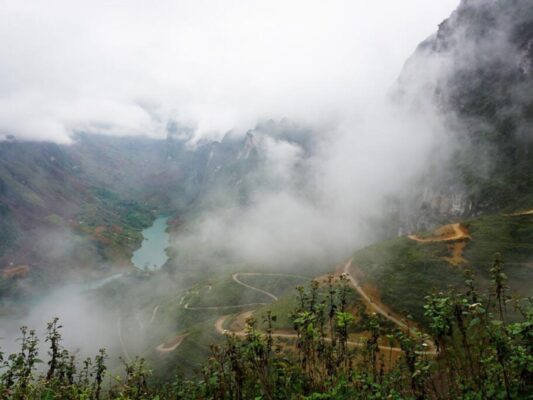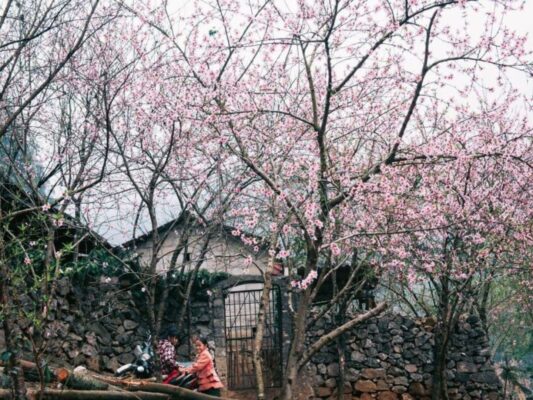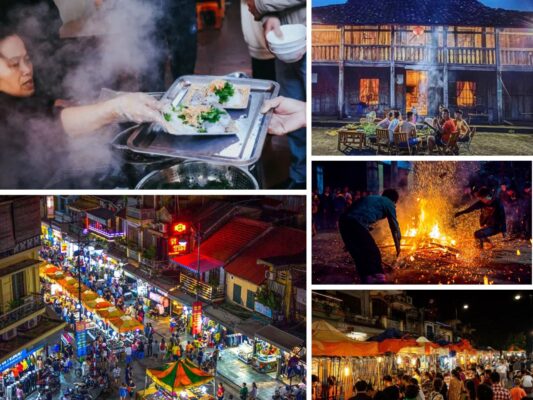Top 7 Ha Giang Ethnic Minorities: Unveil the Rich Traditions
If you’re tired of the same old tourist spots, Ha Giang ethnic minorities are here to spice things up! Many people miss the chance to discover these cool, unique communities and their amazing traditions. Ha Giang is full of different groups, each with their own style, festivals, and way of life. In this article, we’ll take you on a fun journey to meet them. Ready for an adventure? Keep reading to learn more about these fascinating cultures!
Top 7 Ha Giang Ethnic Minorities: Embrace the Diversity of Culture
If you’re looking to explore the rich cultural tapestry of northern Vietnam, our Ha Giang travel guide is the perfect way to discover the top 7 Ha Giang ethnic minorities and embrace their vibrant traditions.
1. The Hmong
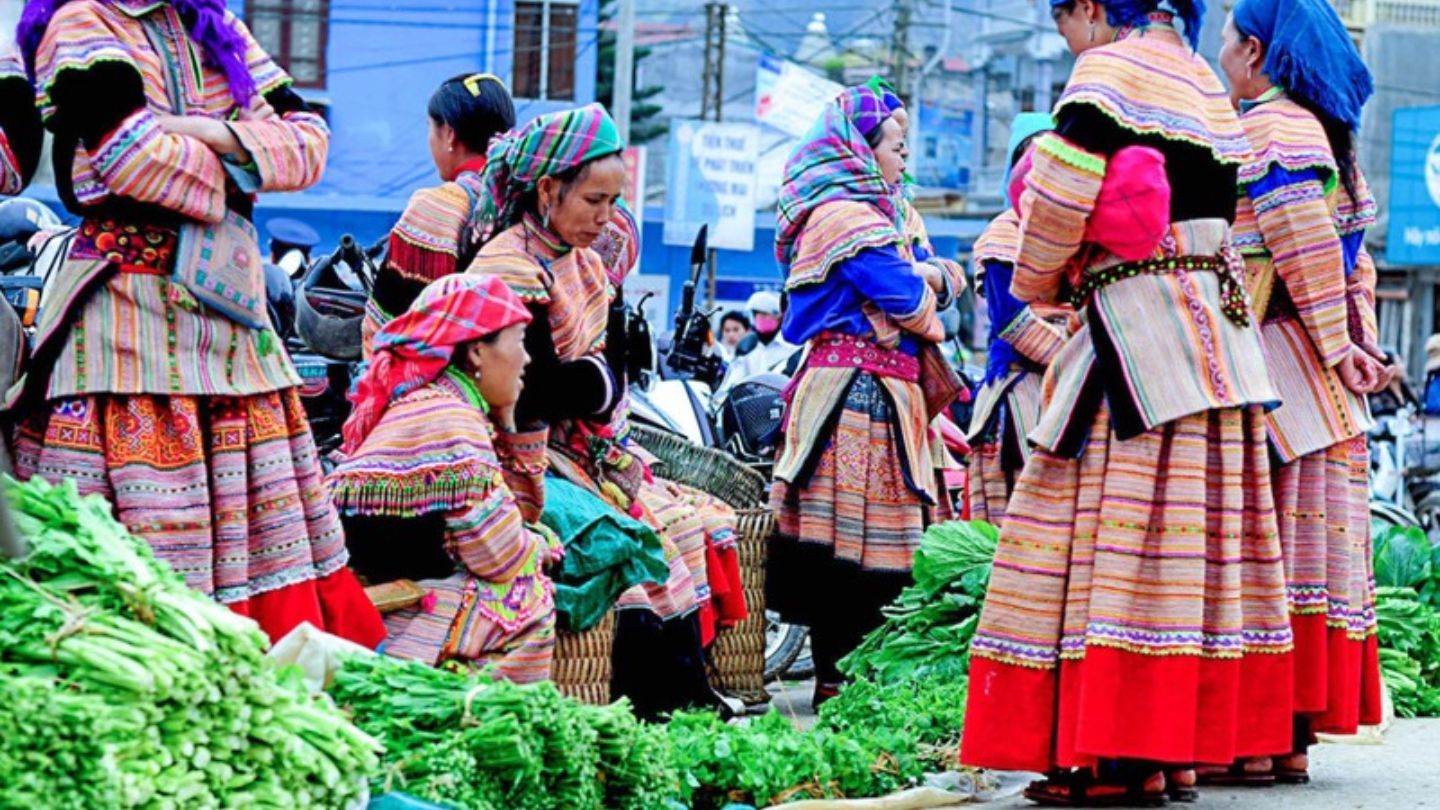
The H’mong people are the biggest ethnic group in Ha Giang and the seventh largest in all of Vietnam! With such a big population, their work life is pretty varied. They grow crops like maize, wheat, and barley in terraced fields, and used to grow flax and opium. They also weave and tend to fruit orchards with apples, pears, and peaches. H’mong families usually raise cattle, pigs, chickens, and horses – horses are especially important in their culture. There are different H’mong groups, each known for their unique clothing styles, like the Flower H’mong and Black H’mong.
# Traditional Clothing
The Hmong are hard to miss with their colorful clothes – women rock bright embroidered skirts and silver jewelry, while men wear indigo outfits. Don’t miss their awesome New Year festival with dances, music, and fun games!
# H’mong House
The H’mong people usually live in houses made of wood, bamboo, and thatch. These houses are sometimes built on the ground or raised on stilts, especially in the mountains. The inside is simple with different spaces for sleeping, cooking, and family time. The houses are designed to keep the air fresh and protect from the weather. H’mong homes are built to make families feel close and comfortable together.
#A Journey Through Hmong Villages
Want to dive into Hmong culture? Head to villages like Dong Van and Meo Vac! You can stay in homestays, get a taste of their delicious food, and maybe even try your hand at crafting – whether it’s embroidery or weaving. It’s the perfect way to learn and have fun!
2. The Tay
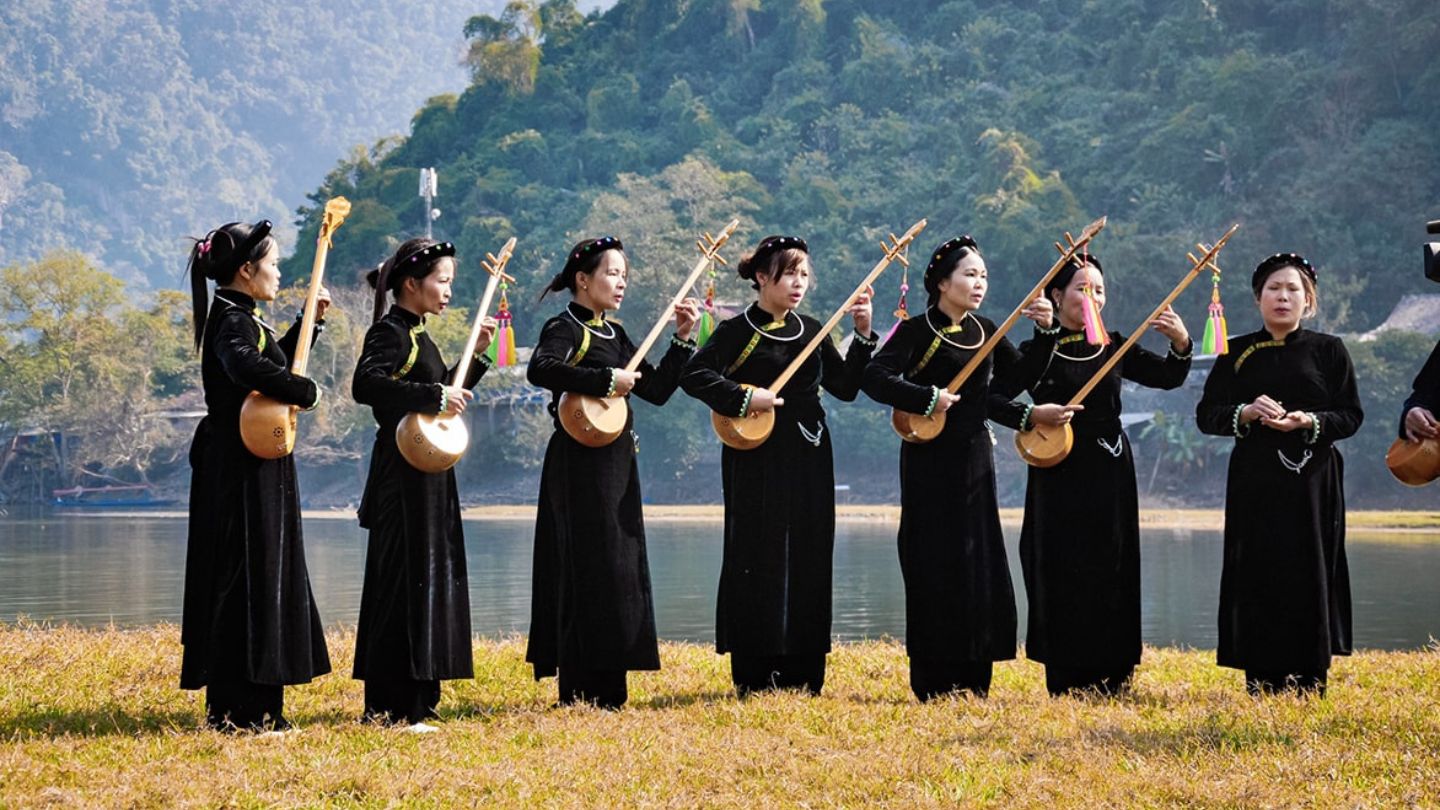
The Tay people, along with the H’mong and Dao, are one of the biggest groups in Ha Giang. They grow rice in the fields by the river and in the mountains, just like other groups. The Tay are good at making things like farm tools, clothes, pottery, and wood items. Women often weave in their free time.
# Stilt Houses: A Glimpse into Tay Architecture
The Tay people are known for their cool stilt houses, built to handle the mountains and keep out floods. These wooden homes have thatched or tiled roofs and are raised up on stilts. If you want to experience true Tay hospitality, stay in a homestay, enjoy tasty traditional meals, chat with the locals, and learn all about their unique way of life!
#Festivals and the Spirit of Tradition
The Tay people love their festivals, and the Long Tong Festival is one of the biggest! Held in early spring, it celebrates the start of the farming season with rituals, traditional games, and lively performances. It’s a fun and colorful event that shows just how much the Tay value nature and their culture. Definitely a festival full of energy and tradition!
3. The Dao
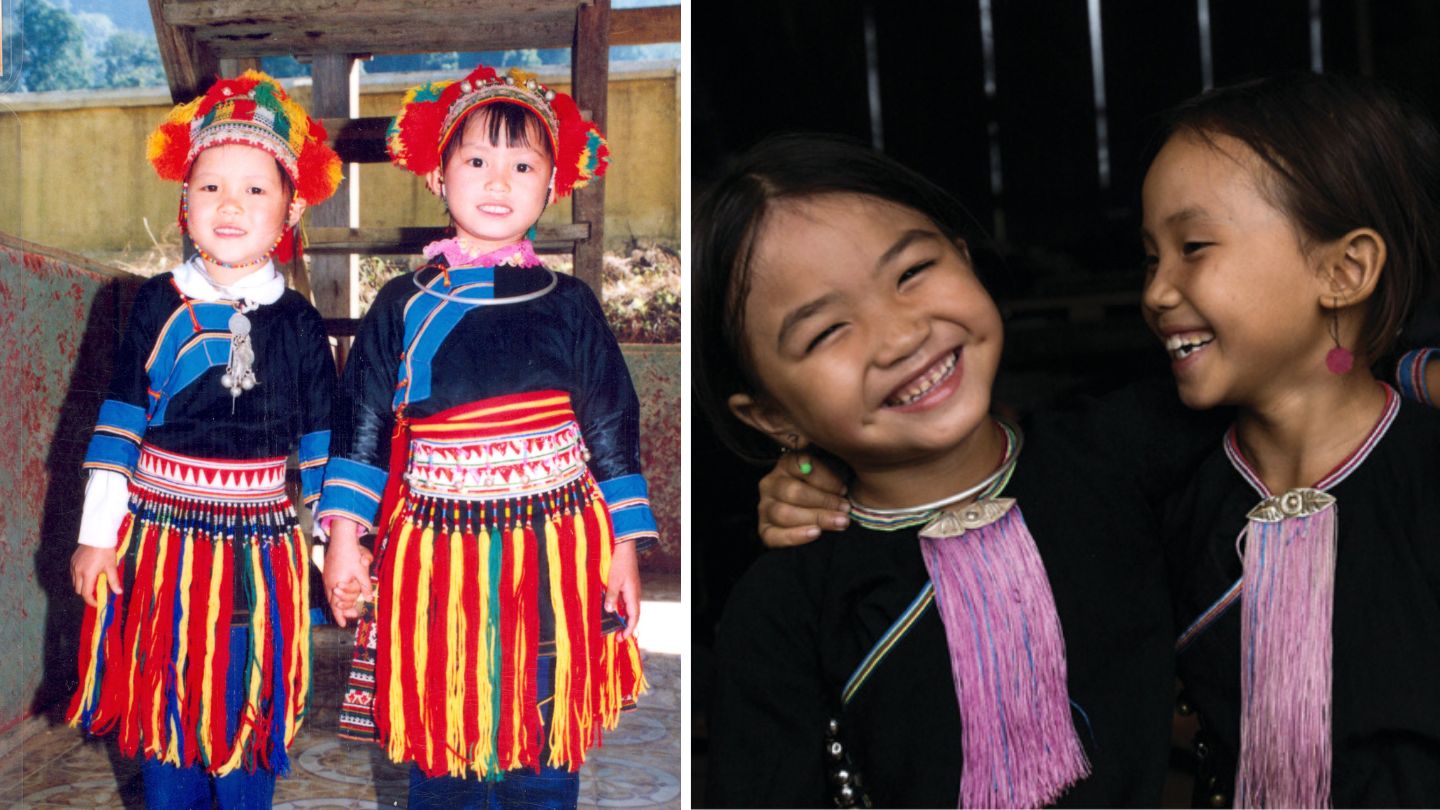
The Dao people in Ha Giang come in different groups, like the Red Dao, Dao Tien, Dao Ao Dai, and Dao Lo Giang, each with its own unique culture. They mostly farm on terraced fields, but also craft things like jewelry, fabrics, and even do some forging. When you visit Ha Giang, you’ll spot their classic cob and stilt houses. The Dao have a rich culture full of traditions, and their customs, like worshiping and practicing magic, make them pretty special.
#Traditional Clothing
The Dao people have different sub-groups, with the Red Dao and Black Dao being the most famous. The Red Dao women stand out with their bright red headscarves and beautifully embroidered clothes, while the Black Dao prefer simpler, darker outfits. Both groups are super proud of their rich traditions and have a strong sense of community. They really know how to keep their culture alive and thriving!
#Healing Arts and Spiritual Rituals
The Dao people are famous for their herbal medicine and healing skills. They use plants and herbs to make remedies for all kinds of health issues. If you visit a Dao village, you can dive into these ancient practices and even try a herbal bath – trust me, it’s a relaxing and therapeutic experience! It’s a perfect way to see how the Dao connect with nature to heal the body and mind.
#Dao Festivals: Ceremonies Full of Life
The Dao people have some amazing festivals, and the Fire Dance Festival is definitely one of the coolest! Held during the lunar New Year, people dance around a big bonfire to purify the land and their community. It’s a magical sight that shows the Dao’s deep spiritual beliefs and their strong bond with nature.
4. The Nung
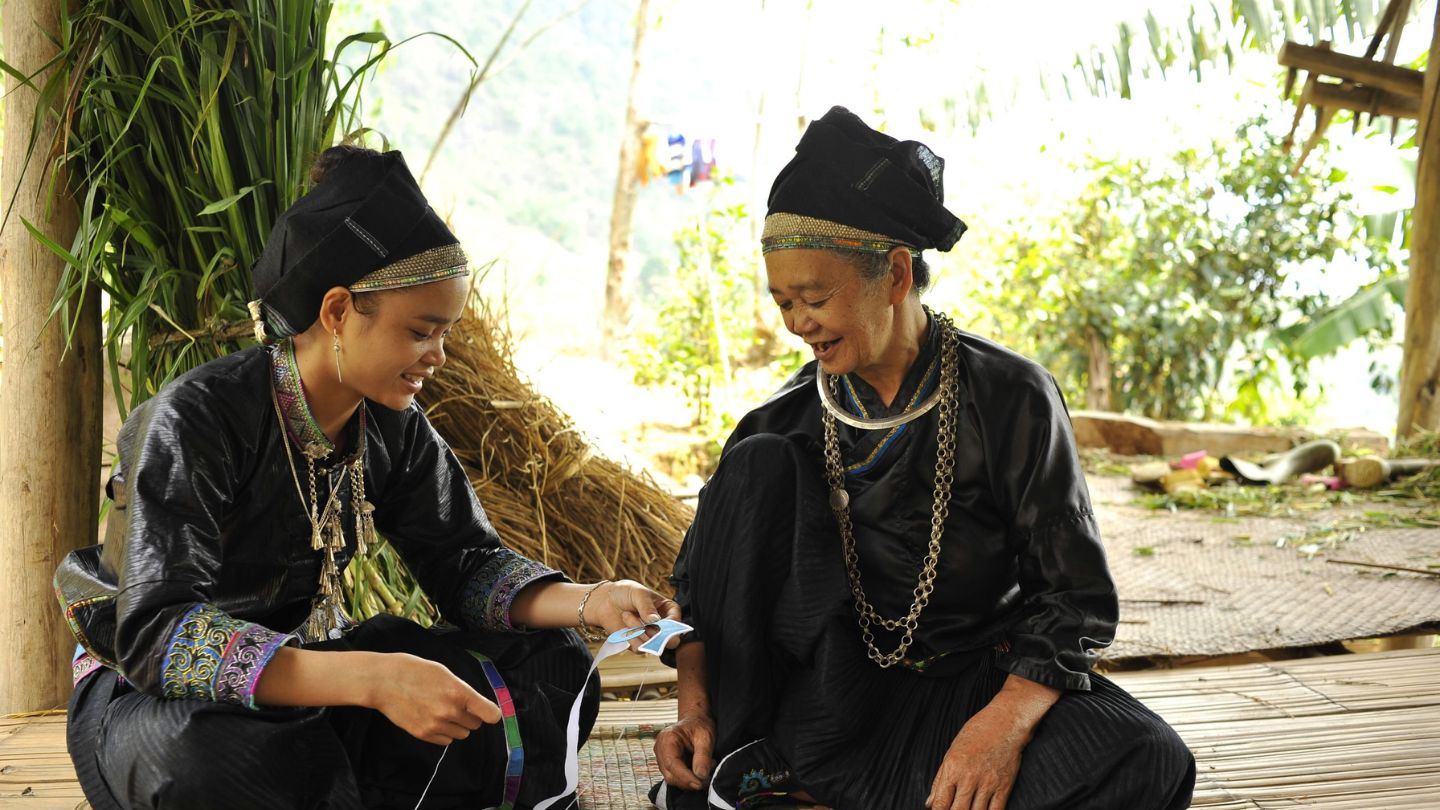
The Nung people are pros at wet rice farming and know all the tricks of irrigation and agriculture. They’re also talented at forging, carpentry, and weaving. The Nung usually live in valleys, hillsides, or near rivers, and raise animals for their own food. They live in stilt houses, where the outer part is for the men and ancestor worship, while the inner part is for the women. What about weddings? They’re a bit different—it’s the groom’s mom’s younger brother who takes charge of all the wedding stuff!
# Festival of the Nung People
The Nung people are known for their amazing weaving and pottery, making beautiful textiles and ceramics that are both useful and decorative. They also celebrate the Forest God Worship Ceremony, a super important festival for them. It’s all about showing respect for the forest god and is a big part of their cultural, spiritual, and religious life.
5. The Lo Lo
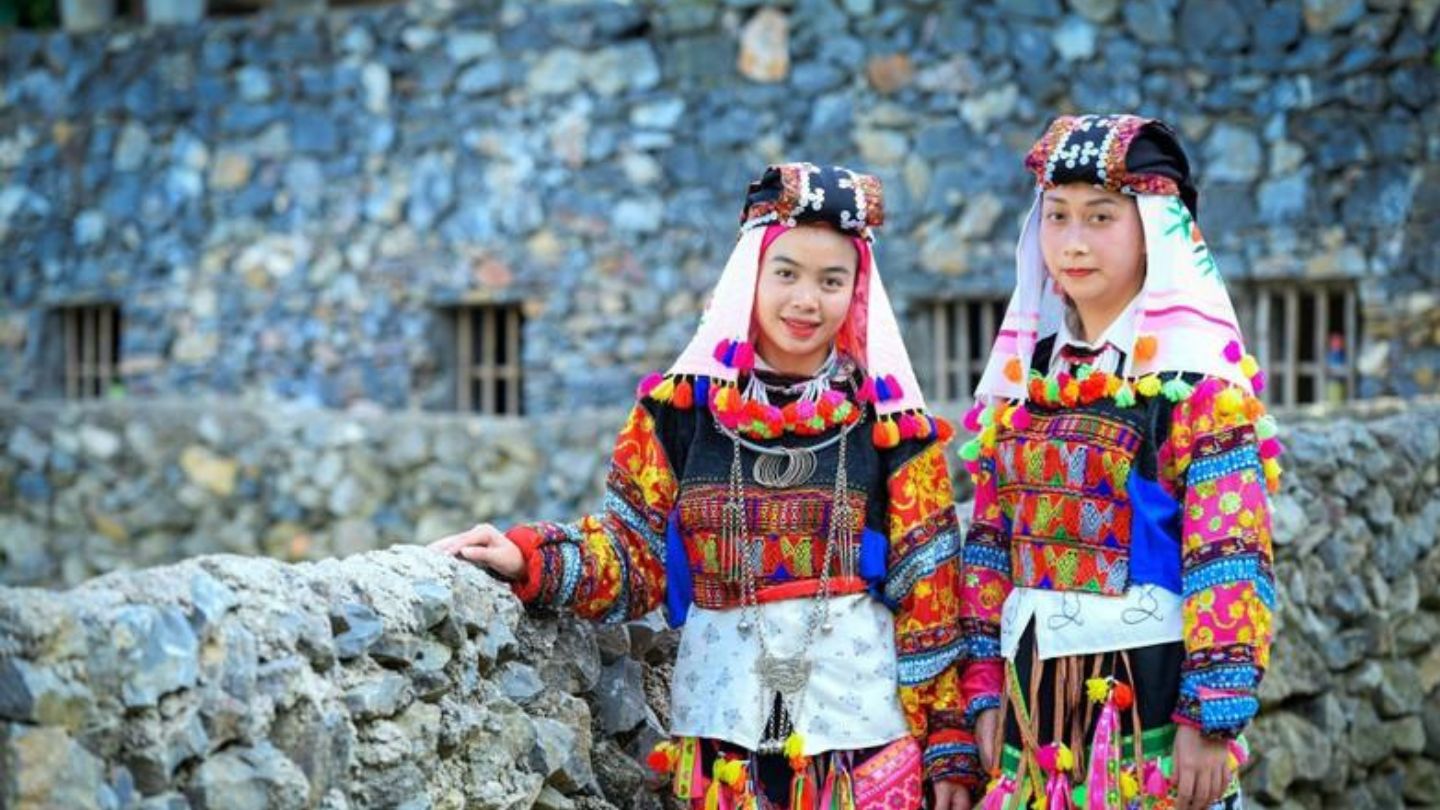
The Lo Lo people live in Dong Van and Meo Vac, part of the Yi group from China. “Lo Lo” means “tiger” in their language, linked to their tiger worship. There are about 1,400 Lo Lo in Ha Giang. They live in villages on mountain slopes near water, with homes on stilts or the ground. Women wear traditional clothing with wax patterns. Weddings are a big family event, and after marriage, the couple usually lives with the husband’s family.
# Traditional Clothing and Unique Jewelry
The Lo Lo people are famous for their colorful, eye-catching clothing, with detailed patterns and bright hues. Women wear skirts and blouses decorated with beads, coins, and embroidery, while men stick to black or indigo outfits. The Lo Lo also make stunning jewelry from silver and other materials, which is not just pretty but holds deep cultural and spiritual meaning.
# Festivals and Cultural Celebrations of the Lo Lo
The Lo Lo love their festivals, especially the Long Tong Festival and the New Rice Festival. These celebrations are full of traditional music, dance, and rituals that honor spirits and pray for a bountiful harvest. Attending these festivals is a great way to experience the rich culture of the Lo Lo people firsthand – plus, it’s a whole lot of fun!
6. Giay
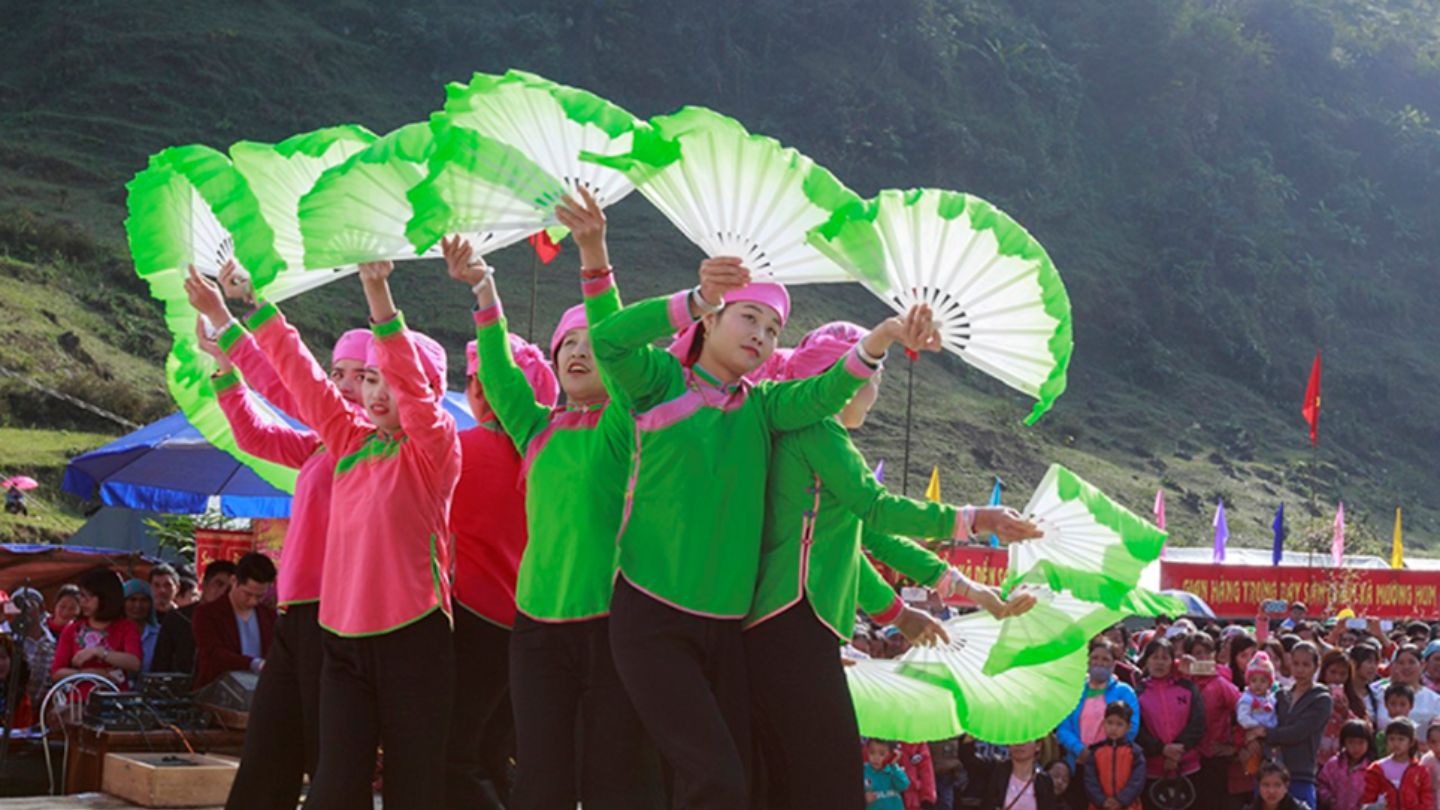
The Giay people make a living by farming dry land and rice paddies, and they’re also pretty skilled in handicrafts like rattan weaving and embroidery. Their houses, built on stilts, are similar to other ethnic groups, with a special spot for honoring ancestors.
#Special Custom
The Giay have some interesting traditions – when someone dies, the family goes vegetarian and can’t sit on chairs. Plus, when they take the body to the cemetery, they have to run fast to keep it from being stolen.
7. Pa Then
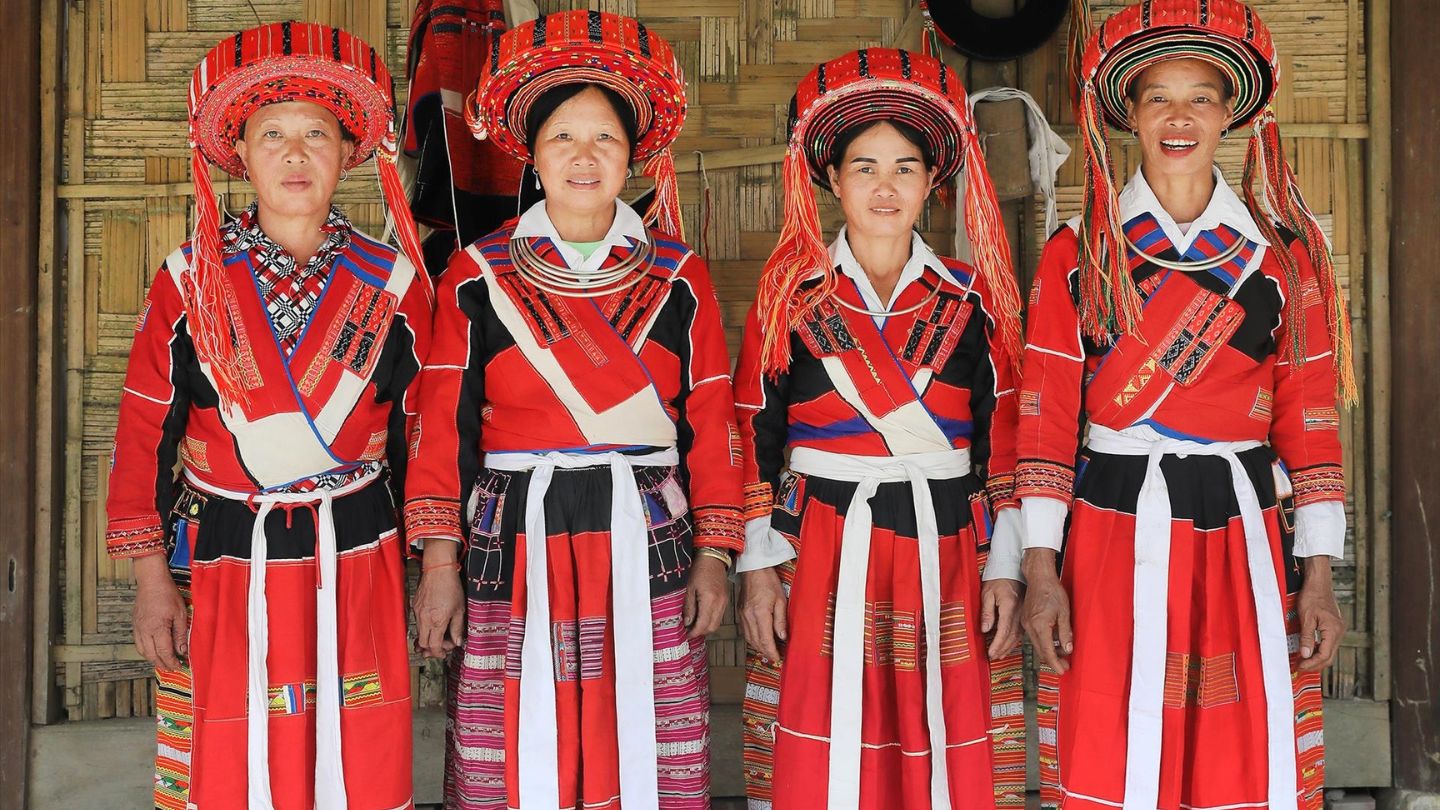
The Pa Then people, a small ethnic group of around 5,000, mostly live in Bac My and Minh Ha villages in Ha Giang. Despite being a tiny group, they’ve got a rich and unique culture. Women wear bright, elegant clothes, while men keep it simple with indigo outfits. They have a quirky rule where people with the same surname can’t marry each other! The Pa Then are also known for their fire jumping festival.
#Festival
During the event, brave participants jump through a huge fire while a shaman calls on the gods. Amazingly, the fire jumpers never get burned, and the secret behind this fiery ritual is still a mystery!
Dive Deep into Ha Giang’s Cultural Experience
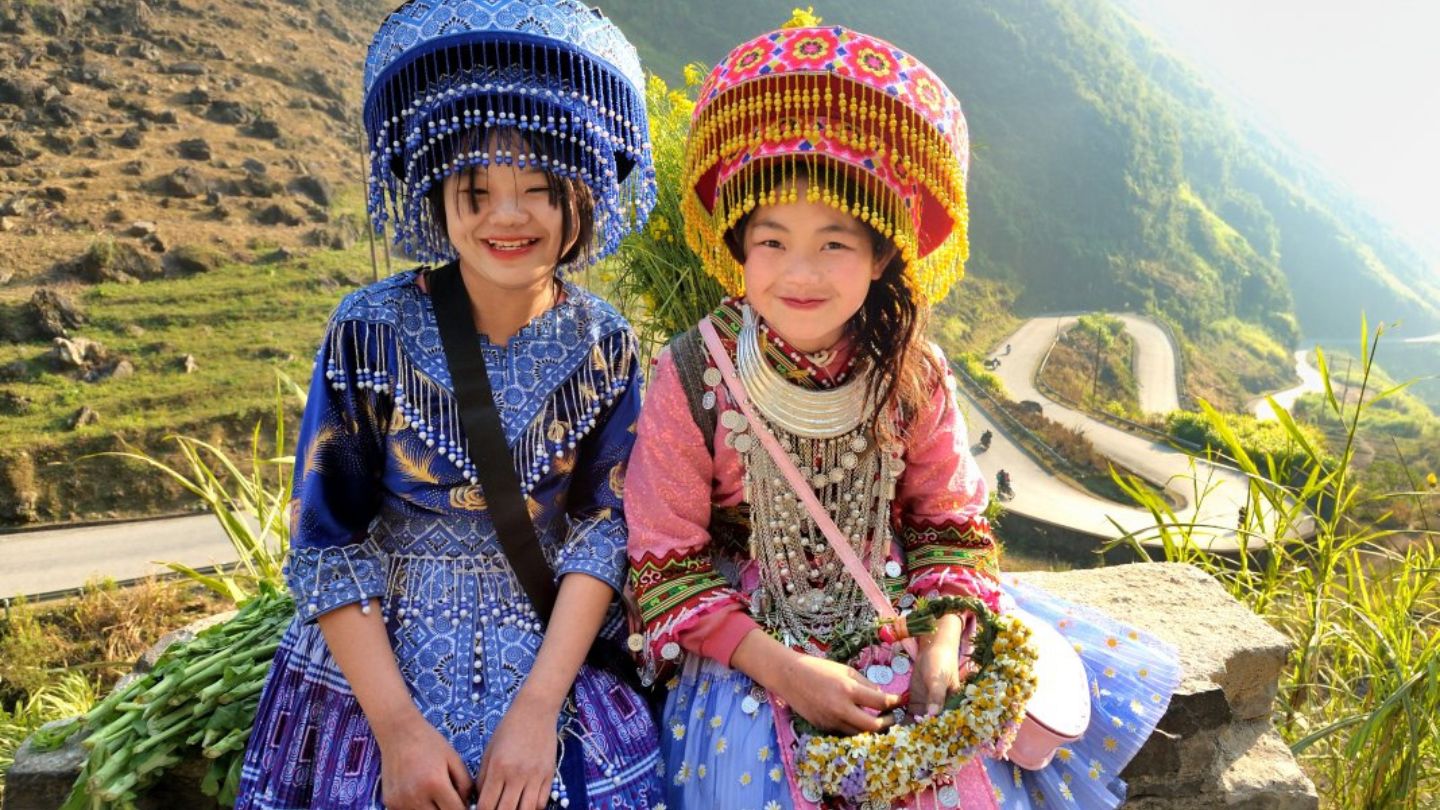
If you want to truly dive deep into Ha Giang’s culture, start by staying with locals in authentic homestays. It’s a great way to experience everyday life and enjoy the warm hospitality of the people. For a hands-on experience, you can join workshops where you’ll learn traditional crafts like weaving, cooking, or pottery. For an unforgettable Ha Giang Cultural Experience, check out these 10 must-do activities to have an unforgettable journey to Ha Giang!!
To get to Ha Giang from Hanoi, you can either take a bus, hire a private car, or go by motorbike.
-
By Bus: There are many daily buses departing from Hanoi to Ha Giang. The journey takes around 6-8 hours, depending on the road and traffic conditions.
-
By Private Car: Hiring a private car is more expensive but provides flexibility and comfort. The trip takes about 6-7 hours.
-
By Motorbike: If you’re up for an adventurous ride, you can rent a motorbike and drive from Hanoi to Ha Giang. It’s a scenic journey that takes around 6-7 hours, offering you the chance to enjoy Vietnam’s countryside views.
Conclusion
Ha Giang ethnic minorities make this place so special. The people are kind and always ready to share their stories and traditions. You’ll find colorful clothes, lively markets, and beautiful landscapes everywhere you go. It’s like stepping into a world full of surprises and new experiences. If you love adventure, meeting new people, and learning about different cultures, Ha Giang ethnic minorities will give you memories that will last forever. It’s definitely a place worth visiting!

